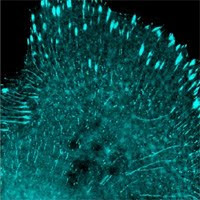From AlleleNews
Compared to the generation of other tissue types, adipogenesis is relatively well studied because of the long availability of mouse cell line 3T3-L1 that can be readily differentiated into white adipocytes upon a simple treatment of a few chemicals. For human adipogenesis cell models, either mesenchymal stem cells (MSCs) from bone marrow or other tissues or adipose-derived stromal vascular cells18 (ADSVCs) could be derived into fat cells. However, these cells have limited potential for expansion for continued studies.
Using iPS cells for tissue development has been a hot topic in many fields of developmental biology. Although one could transfect or transduce iPSCs, it is still often necessary to grow the stem cells into some type of progenitor cells through 3-D suspension culture as embryonic bodies. In a recent Nature Cell Biology paper, Ahfeldt and colleagues in Cowan lab created MSCs from RiPSCs generated by the Luigi Warren mRNA method, then derived them into either white adipose tissues (with lentivirus carried PPARG2) or brown (PPARG2–CEBPB–PRDM16) adipose tissues. It is particularly interesting that brown fat tissues, often considered the “good fat”, could be derived in a dish. This study will open doors for further use of the footprint-free mRNA-derived iPSCs for virtually unlimited supply of precursor cells for in vitro differentiation.
News and Views: http://www.nature.com/ncb/journal/v14/n2/full/ncb2430.html#/references
Original article: http://www.nature.com/ncb/journal/v14/n2/full/ncb2411.html
Subscribe to:
Post Comments (Atom)




No comments:
Post a Comment